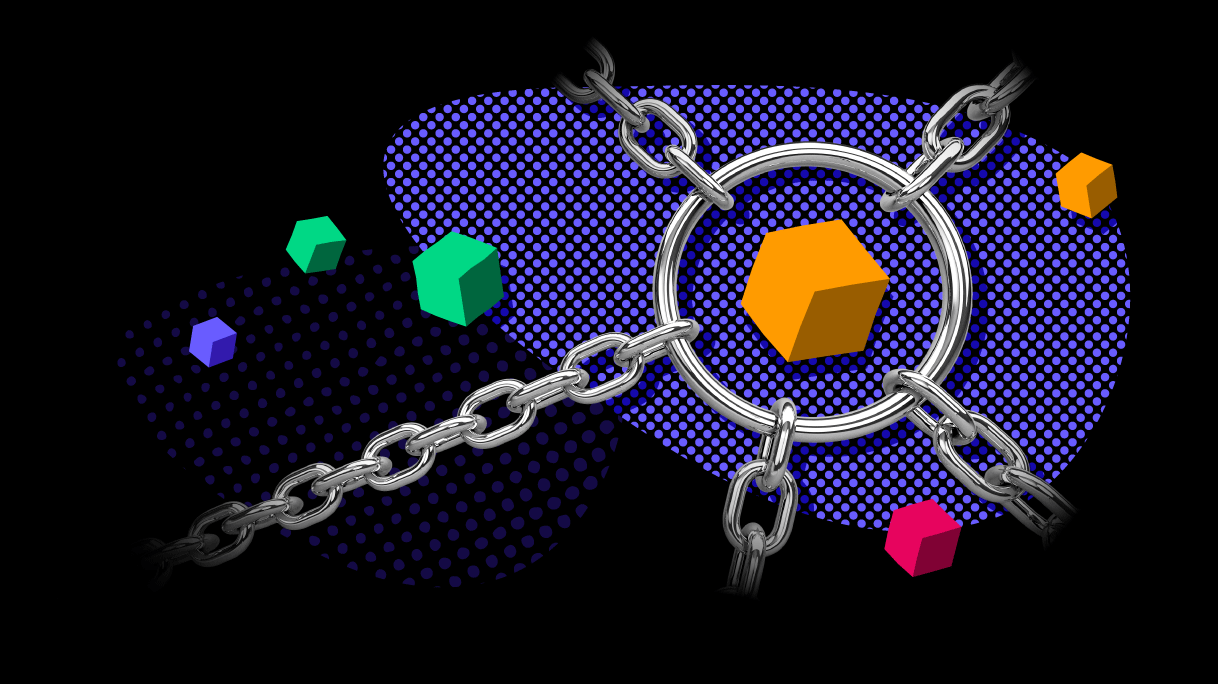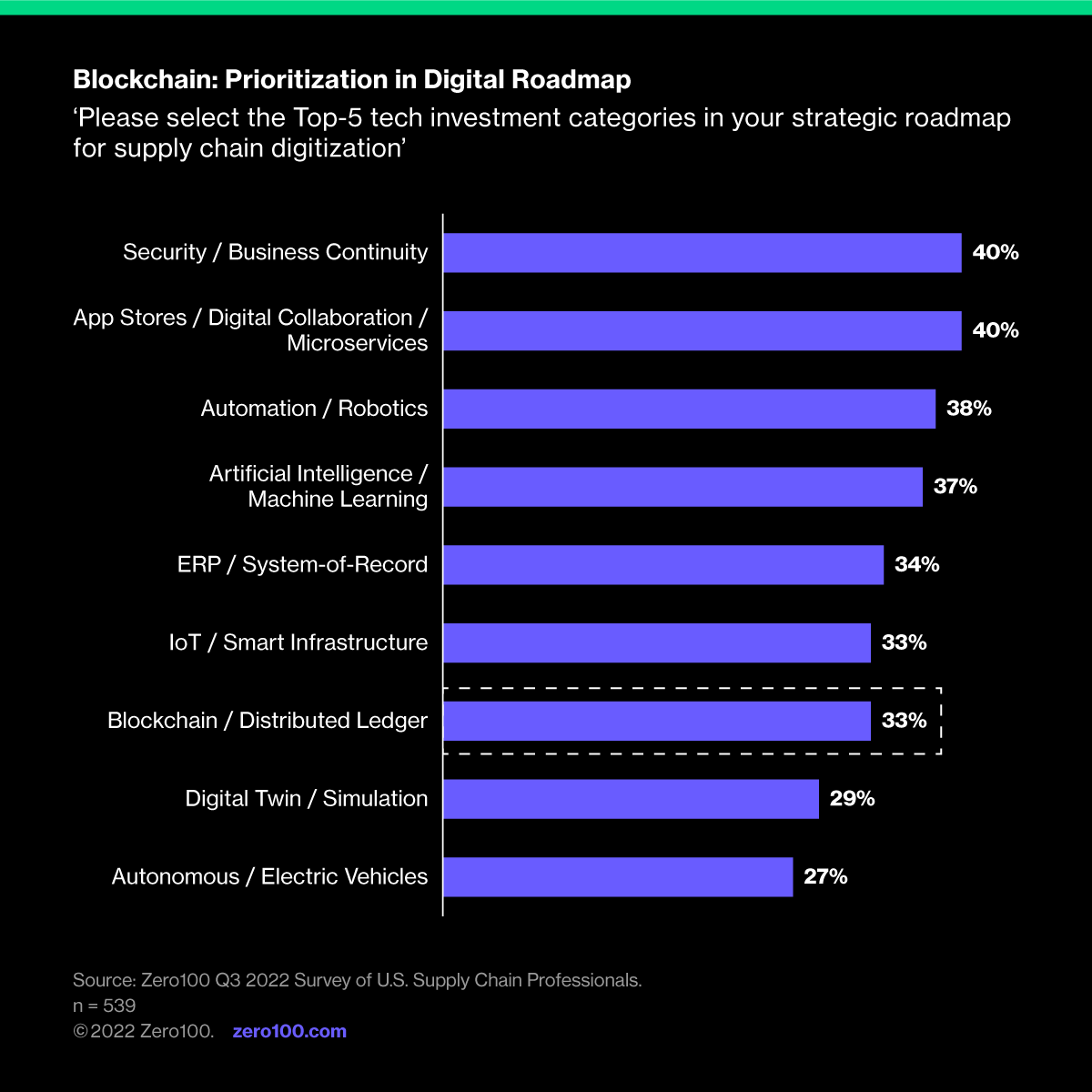
Blockchain’s Role In Supply Chain Decarbonization Is Miles Away
Ethereum’s shift from a “Proof-of-Work” method of verifying transactions to “Proof-of-Stake” this week gets us thinking – how close are we from using blockchain to achieve decarbonization across supply chains?
I once had a conversation with a CSCO who said blockchain was “the most exciting tech breakthrough” they'd seen in years. Since then, narrowly targeted use cases in supply chain have had success verifying the provenance of fungible commodities like meat, produce, coffee, and precious gems.
In theory, the idea of complete unit level chain-of-accountability for materials from source to consumer is super compelling. In fact, it is no closer to solving our climate crisis now than space colonization was to saving us from a polluted, over-crowded planet in 1970: Far, far, away.
How Much Less Carbon-Filthy Is Blockchain Today Than a Year Ago?
The news trigger for this column was Ethereum's announcement that it has shifted from a “Proof-of-Work” method of verifying transactions to a “Proof-of-Stake” method. The compute power required for each transaction is reportedly lower by 99.95% with this change. This is big news, at least for public blockchain applications, especially cryptocurrency.
So, yes blockchain is taking a massive step toward being less energy hungry than before, but for supply chain strategists looking to decarbonize operations the takeaway may still be: “so what?”
Supply Chains Need a Solid Step Toward Zero Carbon – Not a Blockchain Fantasy
Companies have made many carbon reduction commitments over the past few years. Meanwhile regulators including the SEC and EU, have started tightening the screws on reporting compliance in ways that no longer afford much time for supply chain leaders to dream big. Getting the data, validating its accuracy, and establishing near-term targets is happening right now and no one is truly ready, so spending effort on blockchain pilots is probably a bad use of resources.
The blockchain dream is compelling for supply chain strategists because of its potential to keep track of the unique path taken by any material item from its moment of extraction to its moment of consumption, no matter how complex the journey. Unfortunately, it has worked well so far only in permissioned blockchain environments with known participants, simpler consensus mechanisms and reliable physical verification systems.
In these cases, like one I heard about several years ago in precious metals mining, the idea is to know exactly what purity of gold you're getting by seeing the full story of its source back to the earth. Extrapolate this out to every raw material imaginable and it's easy to get excited about the possibility of a carbon accounting system based on actuals, not averages. Just like it was easy to imagine colonizing space in the 2013 film Elysium, starring Matt Damon. Maybe someday, but it won't help now.
Miles Away, But Still Worth Watching
From a digitize-to-decarbonize perspective, blockchain is not about to rock your world, but it is also not irrelevant. As a way to record data and link it to transactions in motion, the bigger concept of distributed ledgers offers a mind-blowingly powerful way to personalize the choices customers make when they buy, use, and ultimately return products. Our most recent survey on digital roadmaps suggests that supply chain leaders have it just about right: third from last on a list of 10 choices, but still in the conversation for 33% of our respondents.

For long-horizon plans to digitize supply chains, blockchain has a few traits that make it worth studying as a digital investment area:
- Trusted: Blockchain is a trust-based mechanism that becomes more powerful as more people use it. This means it will only work in narrow sandbox deployments at first, but longer term could be as transformative as barcodes or even money, if people buy in.
- Distributed: Like the internet, blockchain is everywhere. Based on decentralized computing and consensus-based truth, blockchain could grow to be both pervasive and extraordinarily failsafe, if the virtuous circle of trust gets rolling.
- Unitary: Cryptocurrency is based on blockchain technology because it guarantees the buyer that they are the unique owner of, for example, a bitcoin or an NFT. In terms of decarbonization, this could unlock consumers' willingness to buy low carbon options specific to their place and time, if they care to.
It may sound like science fiction, but even Star Trek got a few things right.
Critical Reading
THE VERGE
Can Software Simplify the Supply Chain? Ryan Petersen Thinks So
Commentary: Global trade is the circulatory system for the world economy – forty seven percent of GDP is international trade. Flexport CEO Ryan Petersen believes software can provide end-to-end visibility into global supply chains.
#globaltrade #software
FORBES
Traceability Can Enable Circularity In The Fashion Industry
Commentary: The certifications that are currently used in the fashion industry to “guarantee” a material is of a sustainable origin can easily be abused. We can turn to blockchain tracing solutions for help.
#blockchain #materials
THE WALL STREET JOURNAL
Inside Seoul Robotics Contrarian Approach to Autonomous Vehicle Tech
Commentary: Seoul Robotics, which partnered with Nvidia in August, is taking a different approach to commercializing autonomous vehicles. Instead of outfitting vehicles with sensors, they are outfitting surrounding infrastructure with sensors.
#robotics #vehicles